Academies and Schools of Art in Latin America
This edited volume’s chief aim is to bring together, in an English-language source, the principal histories and narratives of some of the most significant academies and national schools of art in South America, Mexico, and the Caribbean, from the late 18th to the early 20th centuries.
The book highlights not only issues shared by Latin American academies of art but also those that differentiate them from their European counterparts. Authors examine issues including statutes, the influence of workshops and guilds, the importance of patronage, discourses of race and ethnicity in visual pedagogy, and European models versus the quest for national schools. It also offers first-time English translations of many foundational documents from several significant academies and schools.
This book will be of interest to scholars in art history, Latin American and Hispanic studies, and modern visual cultures.
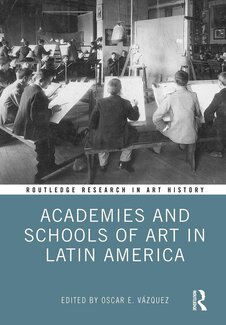
Bans, Walls, Raids, Sanctuary: Understanding U.S. Immigration for the Twenty-First Century
Days after taking the White House, Donald Trump signed three executive orders—these authorized the Muslim Ban, the border wall, and ICE raids. These orders would define his administration’s approach toward noncitizens. An essential primer on how we got here, Bans, Walls, Raids, Sanctuary shows that such barriers to immigration are embedded in the very foundation of the United States. A. Naomi Paik reveals that the forty-fifth president’s xenophobic, racist, ableist, patriarchal ascendancy is no aberration, but the consequence of two centuries of U.S. political, economic, and social culture. She deftly demonstrates that attacks against migrants are tightly bound to assaults against women, people of color, workers, ill and disabled people, and queer and gender nonconforming people. Against this history of barriers and assaults, Bans, Walls, Raids, Sanctuary mounts a rallying cry for a broad-based, abolitionist sanctuary movement for all.

Other Natures: Environmental Encounters with Ancient Greek Ethnography
Ancient Greek ethnographies—descriptions of other peoples—provide unique resources for understanding ancient environmental thought and assumptions, as well as anxieties, about how humans relate to nature as a whole. In Other Natures, Clara Bosak-Schroeder examines the works of seminal authors such as Herodotus and Diodorus Siculus to persuasively demonstrate how non-Greek communities affected and were in turn deeply affected by their local animals, plants, climate, and landscape. She shows that these authors used ethnographies of non-Greek peoples to explore, question, and challenge how Greeks ate, procreated, nurtured, collaborated, accumulated, and consumed. In recuperating this important strain of ancient thought, Bosak-Schroeder makes it newly relevant to vital questions and ideas being posed in the environmental humanities today, arguing that human life and well-being are inextricable from the life and well-being of the nonhuman world. By turning to such ancient ethnographies, we can uncover important models for confronting environmental crisis.

Tree of Pearls: The Extraordinary Architectural Patronage of the 13th-Century Egyptian Slave-Queen Shajar al-Durr
The woman known as “Tree of Pearls” ruled Egypt in the summer of 1250. A rare case of a woman sultan, her reign marked the shift from the Ayyubid to the Mamluk dynasty, and her architectural patronage of two building complexes had a lasting impact on Cairo and on Islamic architecture. Rising to power from slave origins, Tree of Pearls—her name in Arabic is Shajar al-Durr—used her wealth and power to add a tomb to the urban madrasa (college) that had been built by her husband, Sultan Salih, and with this innovation, madrasas and many other charitably endowed architectural complexes became commemorative monuments, a practice that remains widespread today. This was the first occasion in Cairo in which a secular patron’s relationship to his architectural foundation was reified through the actual presence of his body. The tomb thus profoundly transformed the relationship between architecture and its patron, emphasizing and emblematizing his historical presence. Indeed, the characteristic domed skyline of Cairo that we see today is shaped by such domes that have kept the memory of their named patrons visible to the public eye. This dramatic transformation, in which architecture came to embody human identity, was made possible by the sultan-queen Shajar al-Durr, a woman who began her career as a mere slave-concubine. Her path-breaking patronage contradicts the prevailing assumption among historians of Islam that there was no distinctive female voice in art and architecture.

The Gender of Latinidad: Uses and Abuses of Hybridity
Latina/os have seen increased visibility in the media in the past several years, especially in feature-length films, network television programs, and various digital platforms. The Gender of Latinidad: Uses and Abuses of Hybridity explores Latina/o visibility—analyzing presence, production, and interpretation throughout various media. An important contribution to the emerging field of Latina/o Media Studies, this unique volume brings together political economy and cultural studies to consider the limitations of cultural politics and explore current issues relevant to Latina/o cultural inclusion.
Author Angharad N. Valdivia addresses the concept of hybridity and applies it to contemporary Latinidad, in which hybrid Latina/os lead hybrid lives and consume hybrid media. The text explores strategies for gendered visibility in a range of popular culture media, using the concept of hybridity to connect Latina/o Studies to Feminist Media Studies, Gender Studies, and Ethnic Studies. Throughout the text, the author discusses the inclusion Latina/o scholars and audiences seek and considers if such inclusion is even achievable. Offering intersectional exploration of Latinidad in mainstream media, this volume:
- Explores the trope of the spitfire in the context of popular media
- Brings Disney Studies into Latina/o Studies
- Discusses the dynamic inclusion of Latinidad in awards ceremonies
- Assesses the implicit utopias of Latina/o representation
- Presents the only major academic treatment of Charo
Presenting an original perspective on Latina/os in media, The Gender of Latinidad: Uses and Abuses of Hybridity is an ideal text for students and scholars in areas including Gender Studies, Ethnic Studies, and general Media and Feminist Media Studies.
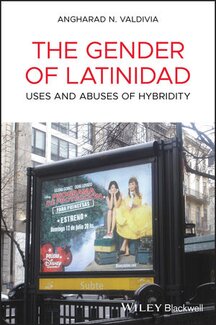
Martial Law Melodrama: Lino Brocka's Cinema Politics
Lino Brocka (1939–1991) was one of Asia and the Global South’s most celebrated filmmakers. A versatile talent, he was at once a bankable director of genre movies, an internationally acclaimed auteur of social films, a pioneer of queer cinema, and an outspoken critic of Ferdinand Marcos’s autocratic regime. José B. Capino examines the figuration of politics in the Filipino director’s movies, illuminating their historical contexts, allegorical tropes, and social critiques. Combining eye-opening archival research with fresh interpretations of over fifteen of Brocka’s major and minor works, Martial Law Melodrama does more than reveal the breadth of his political vision. It also offers a timely lesson about popular cinema’s vital role in the struggle for democracy.
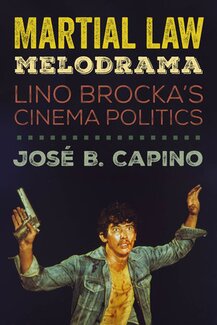
Radical Histories of Sanctuary
This editors’ introduction examines the genealogies of sanctuary as a space—and movement-based oppositional practice, one that contests the sovereign power of the nation-state and the structural roots of multiple, intersecting oppressions. Like each contribution to this special issue, the introduction challenges readers to reconsider the meanings and possibilities of sanctuary movements across time and place. It raises contexts and themes that are investigated in the issue’s contributions on the struggles of migrant communities in a context of increasingly militarized borders, Indigenous practices of radical hospitality, GLBTQ spaces of refuge, policing reform efforts, and practices of civil disobedience. This introduction looks to both the history and the radical future of sanctuary.

Fresh Water: Design Research for Inland Water Territories
Fresh Water is a book that addresses regional, territorial, and continental water issues through interdisciplinary design research in landscape architecture. The geographical and hydrosocial context of the major inland (non-coastal) watersheds of the North American continent–the Mississippi, the Great Lakes Basin-St. Lawrence and the Nelson–remains an under-explored field for design research. Major spatial, temporal, biological, and geological manipulations of water bodies, systems, and flows raise critical questions about how to redefine human-hydro relationships and to reverse the deterioration of freshwater systems across the territory. Fresh Water assembles scholarly papers from designers that reframe complex issues of industrial agriculture, energy production, urban sewersheds, water law, transportation tributaries, and cross-watershed diversions, to propose new inland water futures. Design contributors interrogate the institutional regime and control of inland water, integrating diverse disciplinary knowledge to support multi-scalar interventions that challenge land and water policy to consider a range of new and urgent partnerships and projects this century.
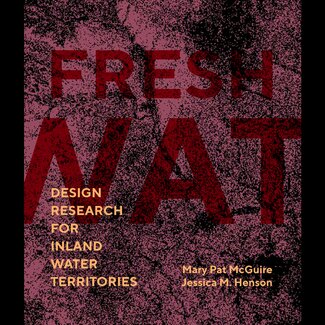
How to Interpret Literature: Critical Theory for Literary and Cultural Studies, 4th Edition
Offering a refreshing combination of accessibility and intellectual rigor, How to Interpret Literature: Critical Theory for Literary and Cultural Studies, Fourth Edition, presents an up-to-date, concise, and wide-ranging historicist survey of contemporary thinking in critical theory. The only book of its kind that thoroughly merges literary studies with cultural studies, this text provides a critical look at the major movements in literary studies from the 1930s to the present. It is the only up-to-date survey of literary theory that devotes extensive treatment to queer studies, postcolonial and race studies, environmental criticism, and disability studies. How to Interpret Literature is ideal as a stand-alone text or in conjunction with an anthology of primary readings, like Robert Dale Parker's Critical Theory: A Reader for Literary and Cultural Studies.
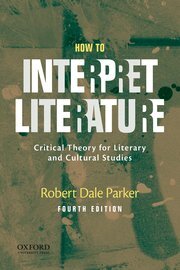
Counter-Cola: A Multinational History of the Global Corporation
Counter-Cola charts the history of one of the world’s most influential and widely known corporations, The Coca-Cola Company. Over the past 130 years, the corporation has sought to make its products, brands, and business central to daily life in over 200 countries. Amanda Ciafone uses this example of global capitalism to reveal the pursuit of corporate power within the key economic transformations—liberal, developmentalist, neoliberal—of the twentieth and twenty-first centuries. Coca-Cola's success has not gone uncontested. People throughout the world have redeployed the corporation, its commodities, and brand images to challenge the injustices of daily life under capitalism. As Ciafone shows, assertions of national economic interests, critiques of cultural homogenization, fights for workers’ rights, movements for environmental justice, and debates over public health have obliged the corporation to justify itself in terms of the common good, demonstrating capitalism’s imperative to either assimilate critiques or reveal its limits.

100 English Building
608 South Wright Street
Urbana, Illinois 61801